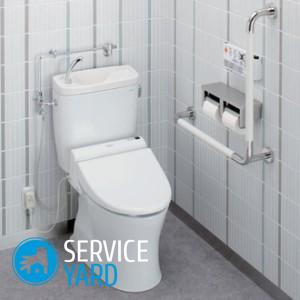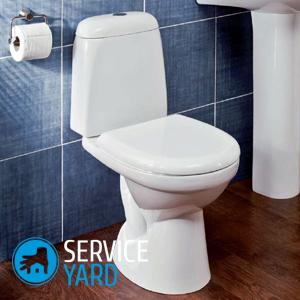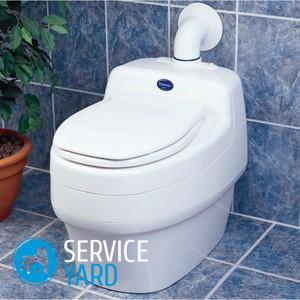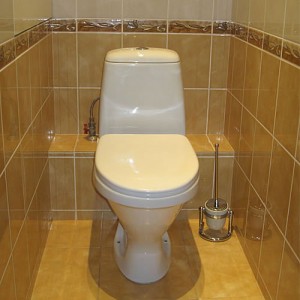Toilet Float Repair

The toilet managed to become habitual sanitary equipment, but its operation, unfortunately, is far from always satisfactory. Various leaks or a constant set of water without a break can confuse its users somewhat. One of the reasons for the incorrect operation of plumbing is the incorrect regulation of the toilet float. Consider how you can do the repair of a toilet float with your own hands.
to contents ↑Important! Often, water leaking from the tank leaves reddish spots on white plumbing, which greatly spoils the mood of any housewife. What to do when all the familiar means do not give the desired result, read our blogs, maybe the answer is very close:
How is the toilet arranged?
Before proceeding with the repair, it is logical to familiarize yourself with the plumbing device. So, the design includes such components:
- Stop valves. She is responsible for how water enters the tank. The float is also part of valves.
- Drain valves responsible for draining.
Since we are talking specifically about regulating the flow of water, we will be more interested in shutoff valves:
- Until relatively recently, it was a fairly simple device consisting of a brass rocker arm with a float attached to it. After the tank is filled with water to a certain level, one of the ends of the rocker arm rises up, and the other - closes the pipe. Such a design is not found in modern drainage mechanisms and is considered morally obsolete.
- In a modern tank, the float is attached to a plastic retainer, and moves only in a vertical plane. However, the general principle remains the same. After the water level reaches a certain point, the float rises, and a special device shuts off the water supply.
Typical malfunctions in valves
For any mechanism, frequent breakdowns can be identified. Toilet shutoff valves are no exception to this rule. Before you remove the float in the tank of the toilet bowl and repair it, you need to know what caused the frequently encountered malfunctions:
- A small amount of water that is collected in a container. The reason is that the float is not adjusted correctly.
- Overflowing water through the top hole. This situation is diametrically opposite to that just described. The reason is either in the incorrect regulation of the float, or because the shut-off valves are faulty.
- Failure to lock. The reason is that the device has lost its tightness and does not pop up.
to contents ↑Important! Sometimes, due to improper installation of the float, it wedges. At the same time, the incoming water does not overlap.
How to make a float in the toilet? Adjustment
The most common problem is too much or too little water entering the tank. If something like this happens, then it's time to do the adjustment.
Here's how to repair a toilet float in this case:
- Remove the lid of the storage tank. How exactly to do this depends on the design. The most common modern option is to unscrew the mount located near the button in the center or near the lever.
- By removing the cover, you gain access to the regulation mechanism. Further, it all depends on how the locking part is arranged:
- If you have an old type tank (with a brass lever), then the lever can be bent manually, even without using any tools. This changes the position of the float. Accordingly, the maximum water level in the tank also changes.
- If the lever on which the float is suspended is made of plastic, then you can change its position by tightening a special screw.
- There is another option, more modern. The float is held in position by a plastic rattle. Sometimes it is attached to a metal spoke. You can adjust it by compressing the metal retainer plates. This installation of the float in the toilet will help solve the problem. Also try to force the device up and down.
- After the adjustment is made, it remains to put the cover in place and tighten the trigger fastener.
to contents ↑Important! If the cause is a loss of tightness, you can try to repair the defect, but the best option is to completely replace the fittings.
Water flows into the toilet
A rather unpleasant breakdown, since it is associated with a large expenditure of water. Water meter readings can unpleasantly surprise you. The reason for the flow of water from the drain vessel to the bowl is the breakdown of the drain valve, or in the “pear” household. To “pear” fit snugly to the nozzle, it is enough to slightly weight it with a large diameter washer.
Sometimes this is not enough. We have to change the drain valves as a whole. The algorithm of actions is as follows:
- Buy a new drain valve, making sure that it is compatible with your tank.
- Shut off the water supply by closing the corresponding tap.
- Remove the top cover.
- Unscrew the fixing nut located at the bottom of the “pear”.
- Install new drain valves and reassemble in the reverse order.
Important! Before you start using the toilet bowl, check how tight the new “pear” is. Open the tap and see if the container is leaking. After you have made sure that the “pear” is in good working order, adjust the locking part, and then replace the lid of the toilet tank.
to contents ↑Important! When the problem of leaks is solved, it's time to put the plumbing in order. Here many housewives come to the rescue. An endless multitude of cleaning tools comes, but how to choose the best for less money:
Stock footage
So, how to properly install the float in the toilet - you roughly know. You can handle the simplest breakdowns yourself, without waiting for the plumber to arrive.









